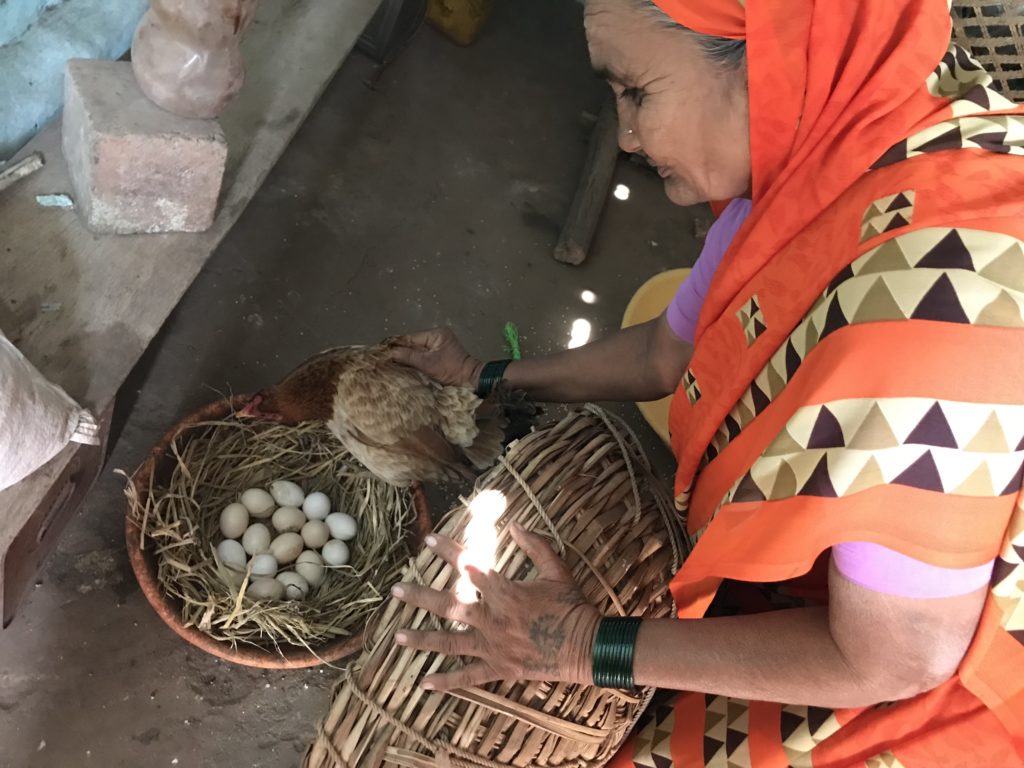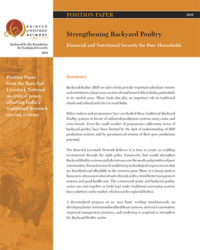Strengthening Backyard Poultry

Financial and Nutritional Security for Poor Households
Poultry is one of the fastest growing segments of India’s livestock sector today. While agricultural crop production has risen at 1.5–2% per annum, the production of eggs and broilers has been rising at a rate of 8–10% per annum. However, backyard poultry (BYP), which is based almost entirely on native birds, has been by-passed by the poultry revolution.
According to recent statistics, 52% of India’s bird population is kept in backyard poultry systems and contributes 23% of the total number of eggs produced. While the population of native birds increased from 188.36 million in 1997 to 238.21 million in 2003, with a growth rate of 8.3% per annum, it is decreasing in relative terms, due to an increase of improved layers (FAO 2008).
Policy makers have focused on the large-scale ‘confined and intensive’ (or industrial) subsector, turning the country into the fourth largest egg producer worldwide (GoI, 2006). But there have been no benefits for the small indigenous bird producers from this development. As a result, the indigenous poultry population that was 50% of the total poultry population, declined to 10 percent within a span of 30 years. Even programmes addressing backyard poultry aim to replace indigenous breeds with exotics or cross-breeds, which are poor scavengers, are non-broody in nature, cannot cope with predators and are dependent on external inputs. This development goes against principles of socially and ecologically sound development, since indigenous birds not only efficiently utilize locally available resources but also ensures food securityIt and is environmentally friendly and energy independent — an important consideration in the current scenario of power shortages and climate change.
The Rain-fed Livestock Network believes it is time to create an enabling environment through the right policy frameworks that would strengthen Backyard Poultry systems and take into account the needs and priorities of poor communities. The commercial sector and backyard poultry sector can exist together as birds kept under traditional scavenging systems have a distinct, niche market, which must be explored further.

